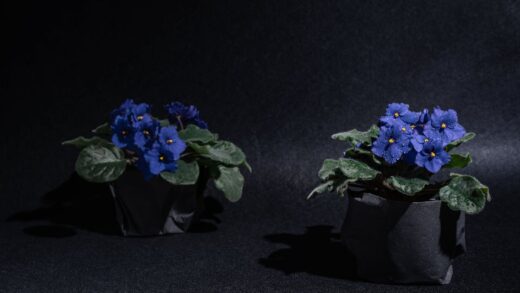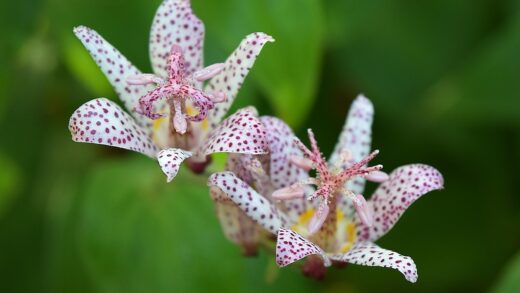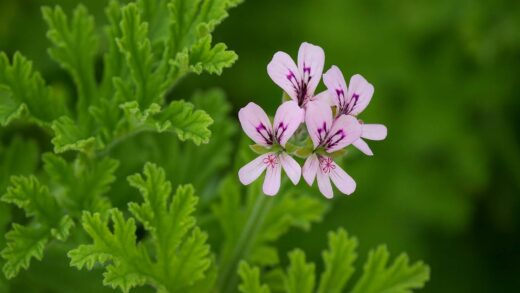Globe amaranth, a native of Central America, is a delightful and resilient annual that brings a unique texture and long-lasting color to any garden. Its clover-like, papery flower heads are remarkably durable, making them a favorite for both fresh and dried floral arrangements. Proper care is straightforward, yet understanding its specific needs is crucial for unlocking a season full of vibrant, globe-shaped blooms. This plant thrives in heat and tolerates drought, making it an excellent choice for gardeners in warmer climates or those looking for low-maintenance options. By providing the right conditions from the start, you can ensure a robust and floriferous display from early summer until the first frost.
Cultivating a thriving stand of globe amaranth begins with a foundational understanding of its basic requirements, which are thankfully not overly demanding. This plant is a sun-worshipper, demanding a location that receives at least six to eight hours of direct sunlight each day to produce the most prolific and vibrant blooms. It is remarkably adaptable to various soil types, but it truly excels in well-draining, sandy loam. Poorly drained soil is one of the few things that can hinder its performance, often leading to root rot and other moisture-related issues. Therefore, amending heavy clay soils with organic matter like compost is a beneficial step before planting.
The plant’s resilience extends to its ability to handle periods of drought once it has become established in the garden. This characteristic makes it a sustainable choice for water-wise landscapes and for gardeners who may not have the time for a rigorous watering schedule. Despite its toughness, a consistent moisture supply during the initial growth phase will help it develop a strong root system, setting the stage for better performance throughout the season. The goal is to provide enough water to encourage deep roots without creating a waterlogged environment.
Beyond the basics of sun and soil, ongoing maintenance for globe amaranth is minimal, contributing to its popularity. It does not require frequent or heavy fertilization and is relatively untroubled by most common garden pests and diseases. The primary care tasks involve ensuring it has enough space to grow, providing occasional water during extended dry spells, and deadheading spent blooms if you wish to encourage a tidier appearance, although it is not strictly necessary for continuous flowering. Its easy-going nature allows it to be a reliable performer that adds consistent color with very little fuss.
Soil and location requirements
Choosing the optimal location is the single most important factor in the successful cultivation of globe amaranth. This plant’s vigor and flowering potential are directly linked to the amount of sunlight it receives. An ideal spot is one that is bathed in full, direct sunlight for the majority of the day, as this promotes strong stems, dense foliage, and an abundance of its characteristic button-like flowers. In locations with partial shade, the plants may become leggy, stretching towards the light, and the flower production will be noticeably diminished, resulting in a less impactful display.
More articles on this topic
The soil composition plays a critical role in the health of the plant’s root system. Globe amaranth has a strong preference for soil that drains exceptionally well, which prevents water from pooling around its roots. Sandy or loamy soils are ideal, but the plant is adaptable as long as water can percolate freely. If your garden consists of heavy clay, it is imperative to amend the planting area. Incorporating generous amounts of compost, sand, or fine gravel will improve the soil structure, enhance aeration, and facilitate proper drainage, mitigating the risk of root diseases.
Regarding soil pH, globe amaranth is not particularly fussy and will tolerate a fairly wide range, from slightly acidic to slightly alkaline. A neutral pH between 6.0 and 7.0 is generally considered optimal, but slight deviations are unlikely to cause significant problems. The focus should remain primarily on the soil’s drainage capacity rather than its specific pH level. Conducting a simple soil test can provide valuable information, but in most average garden soils, the pH will be within an acceptable range for this adaptable plant.
When preparing the garden bed, it is beneficial to loosen the soil to a depth of at least twelve inches. This practice encourages the roots to grow deeper, which in turn makes the plant more resilient to drought and heat stress. While amending the soil, you can also incorporate a small amount of a balanced, slow-release fertilizer, but this should be done sparingly. The primary goal of bed preparation is to create a well-drained, friable environment where the young plants can establish themselves quickly and develop a robust foundation for the growing season.
Watering and feeding fundamentals
Proper watering practices are essential for establishing young globe amaranth plants and maintaining their health throughout the season. When the plants are newly transplanted or have recently germinated, they require consistent moisture to develop a strong root system. During this initial period, the soil should be kept evenly moist but never saturated. A good strategy is to water deeply once or twice a week, depending on rainfall and temperature, allowing the top inch of soil to dry out between waterings. This encourages the roots to seek water deeper in the soil profile.
More articles on this topic
Once globe amaranth is well-established, its water needs decrease significantly, and it demonstrates excellent drought tolerance. Mature plants are quite resilient and can withstand periods of dryness without significant stress. For established plants in garden beds, supplemental watering may only be necessary during prolonged periods of heat and drought when there has been no rainfall for several weeks. Container-grown plants, however, will require more frequent watering as the soil in pots dries out much faster than garden soil, especially on hot, sunny days.
Overwatering is a far greater threat to globe amaranth than underwatering. Consistently wet or soggy soil is a primary cause of root rot, a fungal disease that can quickly prove fatal to the plant. The symptoms of overwatering include yellowing leaves, wilting stems, and a general lack of vigor, which can sometimes be mistaken for a lack of water. It is always best to err on the side of caution and check the soil moisture before applying more water. Feel the soil an inch or two below the surface; if it is still damp, it is best to wait a little longer before irrigating.
In terms of feeding, globe amaranth is a light feeder and does not have high nutrient requirements. In fact, overly rich soil or excessive fertilization can lead to a surplus of leafy green growth at the expense of flower production. For plants grown in reasonably fertile garden soil, supplemental feeding is often unnecessary for the entire season. If your soil is particularly poor or sandy, a single application of a balanced, slow-release granular fertilizer at planting time is typically sufficient to support healthy growth and blooming.
Pruning and deadheading for continuous blooms
Pruning and maintenance are relatively simple for globe amaranth, as the plant naturally maintains a tidy, mounded habit. However, a bit of strategic trimming can enhance its appearance and encourage even more profuse flowering. When the seedlings are young, about six to eight inches tall, you can pinch back the main growing tip. This practice, known as pinching, encourages the plant to branch out, resulting in a fuller, more compact plant with a greater number of flowering stems.
Throughout the growing season, the primary form of pruning involves deadheading, which is the removal of spent flowers. While globe amaranth will continue to bloom without this step, removing the faded blossoms accomplishes several things. It keeps the plant looking neat and tidy, prevents the plant from expending energy on seed production, and redirects that energy into producing new flowers. To deadhead, simply follow the stem of a spent flower down to the first set of healthy leaves and make a clean cut.
The papery bracts of globe amaranth flowers are incredibly persistent and hold their color for a very long time, which can sometimes make it difficult to determine when a flower is truly “spent.” A fresh bloom will feel firm and look vibrant, while an older one may start to look slightly faded or brown and feel less dense. As you become more familiar with the plant’s life cycle, you will learn to recognize the subtle signs that a flower head is past its prime. Regular deadheading every week or two is a good habit to maintain a pristine appearance.
Beyond pinching and deadheading, no other significant pruning is typically required. The plant does not become unruly or overgrown in the way that some other annuals might. If a stem becomes damaged due to weather or other physical stress, it can be trimmed back to a branching point to maintain the plant’s shape. This simple maintenance routine ensures that your globe amaranth remains a beautiful and productive component of the garden from the beginning of summer until the first frosts of autumn.
Pest and disease management
One of the most appealing attributes of globe amaranth is its remarkable resistance to most common garden pests and diseases. This inherent resilience makes it an excellent choice for low-maintenance and organic gardening practices. It is not typically targeted by common insect pests such as aphids, spider mites, or whiteflies, which often plague other more delicate annuals. This means that gardeners can usually enjoy a full season of blooms without having to resort to chemical sprays or other intensive pest control measures.
While generally robust, no plant is entirely immune to problems, and under certain conditions, globe amaranth can face some challenges. The most significant threat is root rot, which is not caused by a pest but by a fungal pathogen that thrives in overly wet, poorly drained soil conditions. To prevent this, it is crucial to plant it in a location with excellent drainage and to avoid overwatering. If you notice a plant wilting despite moist soil, root rot may be the culprit, and unfortunately, it is very difficult to reverse once it has taken hold.
Occasionally, fungal leaf spot diseases can appear, especially during periods of high humidity or frequent overhead watering. These typically manifest as small, discolored spots on the foliage. To manage this, ensure there is good air circulation around the plants by providing adequate spacing at planting time. Watering at the base of the plant using a soaker hose or drip irrigation, rather than with an overhead sprinkler, can also help keep the foliage dry and reduce the likelihood of fungal spores taking hold.
In rare instances, you might find pests like aster leafhoppers, which can transmit a disease known as aster yellows. This disease can cause stunted growth and yellowing or distorted flowers. However, this is not a common problem for globe amaranth. The best defense is a healthy garden ecosystem. By promoting beneficial insects, keeping weeds down, and ensuring your plants are healthy and not stressed, you create an environment where such problems are far less likely to occur, allowing the natural hardiness of the globe amaranth to shine.
Seasonal care considerations
As the seasons progress, the care for globe amaranth adapts slightly to its growth cycle, although it remains a low-maintenance plant throughout its life. In the spring, the primary focus is on successful establishment. This is the time to ensure the soil is well-prepared, and once the danger of frost has passed, to plant your seeds or seedlings into their sunny, well-drained location. Consistent moisture is key during this early stage to help the young plants develop a robust root system that will support them through the heat of summer.
During the peak of summer, globe amaranth truly comes into its own, thriving in the heat and sun that can cause other plants to wilt and fade. Care during this period is minimal. The main task is to monitor soil moisture during extended dry spells and provide a deep watering when necessary, especially for plants in containers. This is also the prime time for harvesting flowers for dried arrangements. For the best color and form, cut the stems when the flower heads are fully open but still fresh and vibrant, then hang them upside down in a dark, well-ventilated area to dry.
As late summer transitions into autumn, globe amaranth will continue to produce a profusion of flowers, often right up until the first hard frost. The cooler temperatures and shorter days do not significantly diminish its performance. Continue to deadhead if you wish, and enjoy the persistent color it brings to the autumn garden as other annuals begin to decline. This is also an excellent time to collect seeds for next year’s garden. Allow a few flower heads to dry completely on the plant, then harvest them and separate the small seeds from the chaff for storage.
With the arrival of the first hard frost, the life cycle of the annual globe amaranth comes to an end. The frost will kill the plant, at which point it can be removed from the garden and added to the compost pile. This final act of clearing the garden bed prepares the space for the following spring. Because it is grown as an annual in most climates, there are no overwintering procedures to worry about, making the end-of-season cleanup simple and straightforward.




















